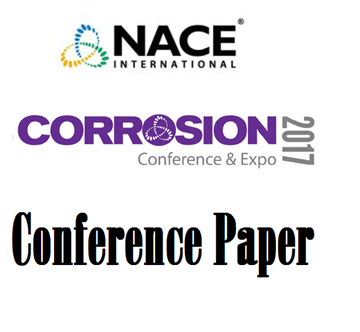Search
Individual Conference Papers
View as
Sort by
Display
per page
Investigating the Application of the Effective Area Approach to Estimating Fatigue Life
Product Number:
51324-21053-SG
Publication Date:
2024
$40.00
Investigating The Effect Of H2S And Corrosion Inhibitor On The Corrosion Of Mild Steel Under High Pressure CO2 Conditions
Product Number:
51322-17943-SG
Publication Date:
2022
$20.00
Investigating the Effect of Temperature in the Community Structure of an Oilfield Microbial Consortium and Its Impact on Corrosion of Carbon Steel
Product Number:
51319-13343-SG
Publication Date:
2019
$20.00
Investigating the Effect of Trace O2 Concentrations on CO2 Corrosion Mechanisms
Product Number:
51324-20996-SG
Publication Date:
2024
$40.00
Investigating the Interaction of Brine Solutions and Diluted Inhibited HCl Acid on Coiled Tubing Steel Corrosion
Product Number:
51320-14596-SG
Publication Date:
2020
$20.00
Investigating the thermal stability and corrosivity of biocrude oil at FCC feeding temperatures for co-processing applications
Product Number:
51323-18895-SG
Publication Date:
2023
$20.00
Investigating the Trends in Coating Degradation During Long Term Accelerated Testing
Product Number:
51324-21021-SG
Publication Date:
2024
$40.00
Investigation & Mitigation Of Corroding Unbonded Post-Tension Tendons
Product Number:
51322-17781-SG
Publication Date:
2022
$20.00
Investigation into Possible AC Corrosion from a Cathodic Protection Groundbed
Product Number:
51319-13188-SG
Publication Date:
2019
$20.00
Investigation of Acid Corrosion Inhibition Using N,N′-(1,4-phenylenebis(methyl))bis(N,N-dimethylalkan-1-aminium) Chloride Corrosion Inhibitors
Product Number:
51320-14723-SG
Publication Date:
2020
$20.00
Investigation of Amorphous Deposits and Potential Corrosion Mechanisms in Offshore Water Injection Systems
Product Number:
51317--9433-SG
ISBN:
9433 2017 CP
Publication Date:
2017
$20.00
Investigation of Anti-corrosion and Adhesion Properties of Epoxy Coatings Containing Surface Modified Fe2O3 Nano Particles on Mild Steel
Product Number:
51319-13128-SG
Publication Date:
2019
$20.00












